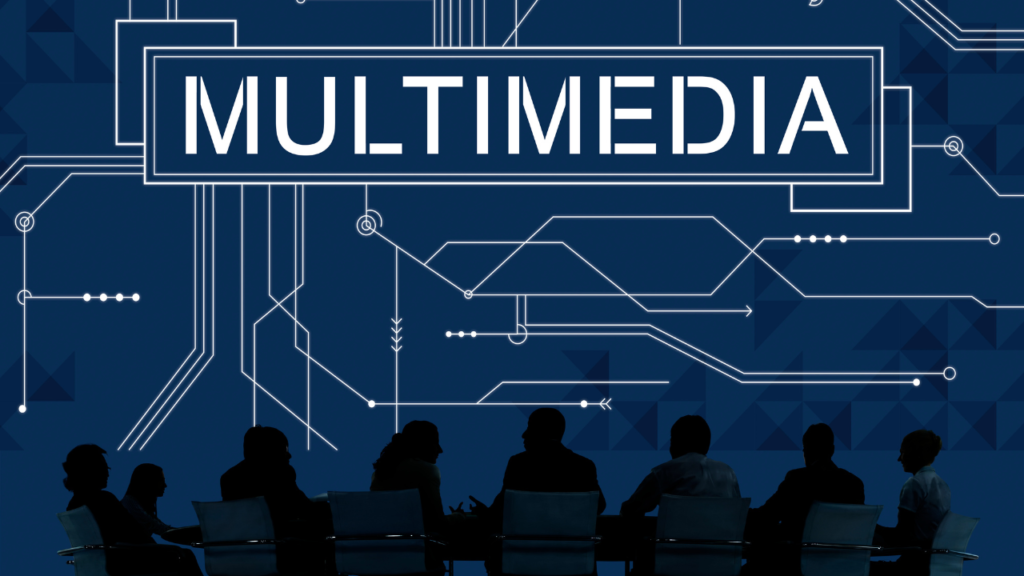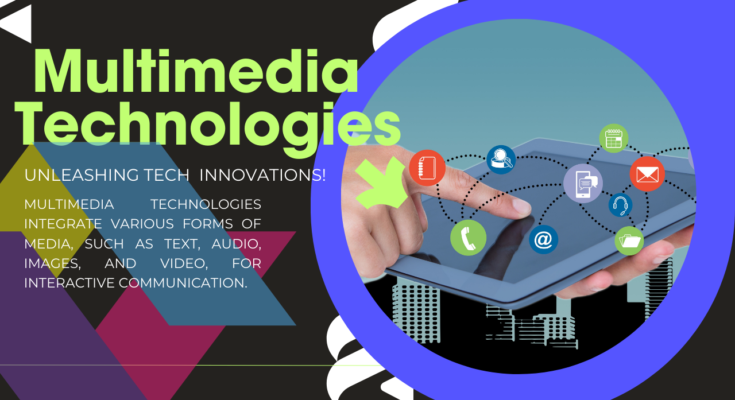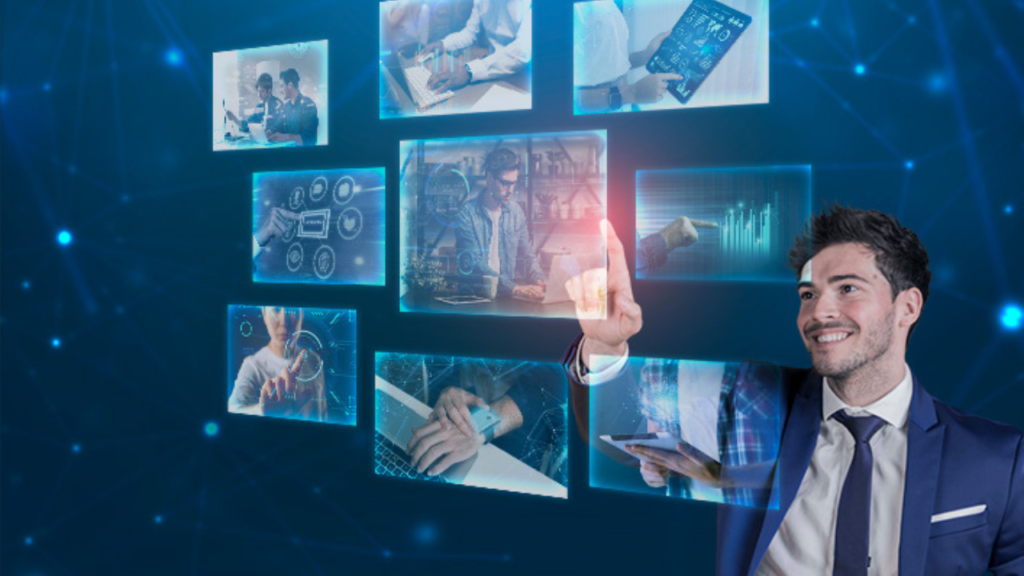The Transformative Power of Multimedia Technologies:
The world is a vivid tapestry of sensations that extends beyond what we can see or hear. Multimedia technologies capture this multimodal characteristic by fusing text, images, music, video, and animation to create immersive and fascinating experiences. Multimedia is like the unseen orchestra conductor, arranging a symphony of information that captivates us in films and transports us in video games.

Multimedia Technologies:
A wide range of instruments and programs that combine different media types—text, photos, audio, video, and interactive elements—are included in multimedia technologies. The objective is to develop a smooth and captivating user experience that transcends conventional communication channels. The integration of many content types made possible by this multidisciplinary approach results in more persuasive and successful communication.
The Building Blocks of a Multimedia Masterpiece:
Applications of Multimedia Technologies:
The Impact of Multimedia: Beyond Entertainment
In the world of multimedia, where video games, music, and movies have typically received the most attention, it’s critical to acknowledge the significant influence that goes much beyond simple enjoyment. This dynamic and adaptable industry has transformed not only our free time but also important facets of our life, impacting education, employment, shopping, and interpersonal relationships.
- Learning Reinvented: Beyond conventional approaches, multimedia technology have ushered in a new era of teaching. The learning environment has been completely transformed by interactive e-learning platforms, educational animations, and virtual reality simulations. These innovative tools make learning more dynamic, adaptable, and accessible to accommodate a wide range of learning preferences.
- The Evolution of Work: These days, using multimedia technologies is crucial to transforming the way we operate in the workplace. Video conferencing, online presentations, and collaboration platforms have transformed remote work environments by facilitating smooth communication and cooperation across teams and geographical regions. A more global and networked work environment has resulted from the expansion of the workplace.
- Redefining Shopping: Multimedia technology has improved e-commerce and given clients a more personalized and interesting shopping experience. By providing customers with additional information, virtual showrooms, 360° product views, and product demos close the information gap between real and virtual retail environments and enhance the entire purchasing experience.
- Digital Connectivity: Multimedia technologies, beyond their concrete uses, have been essential in promoting digital connectedness. People may maintain relationships and stay in touch with loved ones no matter where they live thanks to social media, video calls, and online groups. The digital sphere has developed into a thriving environment for fostering community and social engagement.

The Future of Multimedia:
FAQs on Multimedia Technologies:
Q1. What are Multimedia Technologies?
Text, music, pictures, and video are just a few of the media types that multimedia technologies combine to create interactive communication.
Q2. How do Multimedia Technologies enhance communication?
They enable more engaging and effective communication by combining different media elements to convey information.
Q3. What applications use Multimedia Technologies?
Applications for multimedia technologies can be found in virtual reality, advertising, education, entertainment, and web design.
Q4. How do Multimedia Technologies impact education?
They enhance learning experiences through interactive content, simulations, and multimedia presentations, making education more engaging.
Q5. What part do commercial multimedia technologies play?
Multimedia is used by businesses to generate engaging and memorable experiences for customer engagement, training, marketing, and presentations.
Q6. What role does multimedia play in web design?
A visually beautiful and user-friendly web design is enhanced by the inclusion of multimedia features such as photographs, videos, and interactive information. This improves user experience.
Q7. In what way are multimedia technologies related to virtual reality (VR)?
By fusing visual, aural, and interactive components, virtual reality (VR) uses multimedia technology to create immersive experiences.
Q8. Exist any difficulties in putting multimedia technologies into practice?
Challenges may include compatibility issues, large file sizes, and the need for robust hardware, but advancements aim to address these concerns.
Q9. How can companies use multimedia technologies to promote their brands?
Multimedia can be used by businesses to engage their audience through immersive marketing campaigns, interactive advertisements, and social media content.
Q10. Which developments will influence multimedia technologies in the future?
Augmented reality, 3D multimedia, AI integration, and developments in immersive technology are examples of emerging trends that are redefining multimedia experiences.


